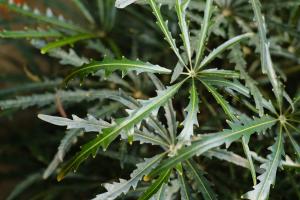Introduction
The calla lily plant (Zantedeschia aethiopica) is a beautiful and easy-to-grow plant that produces lovely white, trumpet-shaped flowers. Whether you're a seasoned gardener or a beginner, caring for a calla lily plant is easy if you follow a few simple steps.
Planting
Calla lilies can be planted outdoors in the spring if you live in a warm climate, but in cooler climates, they should be planted in pots and kept indoors until the temperature warms up. Plant your calla lily in a pot with well-draining soil and make sure the pot has drainage holes to prevent the plant from getting waterlogged. Place your calla lily in a sunny spot or in a location where it will receive bright, indirect light.
Watering
It's important to keep your calla lily plant well-watered, but not waterlogged. Allow the soil to dry out slightly between watering, and be sure to water deeply enough so that water reaches the roots of the plant. Avoid getting water on the foliage or flowers of the plant, as this can cause the plant to develop leaf spot or other diseases.
Fertilizing
Calla lilies benefit from regular fertilizing, especially during their growing season. Use a balanced, water-soluble fertilizer and follow the instructions on the label for the proper amount and frequency of application. Do not over-fertilize your calla lily, as this can cause the plant to become leggy and weak.
Pruning
Regular pruning is not necessary for a calla lily plant, but you may wish to remove spent flowers to encourage the plant to produce more blooms. If the plant becomes too tall or leggy, you can pinch back the tips to encourage the growth of new, more compact foliage. Be sure to sterilize your pruning shears with rubbing alcohol before and after use to prevent the spread of disease.
Pests and Diseases
Calla lily plants are relatively pest-free, but they can be vulnerable to a few different diseases. Leaf spot, caused by a fungus, can appear as brown or black spots on the leaves. To prevent leaf spot, avoid getting water on the foliage of the plant and provide good air circulation around the plant. If leaf spot does appear, prune away affected leaves and treat the plant with a fungicide. Other diseases, such as root rot and bacterial soft rot, can be prevented by planting your calla lily in well-draining soil and avoiding over-watering.
Conclusion
Now that you know how to care for a calla lily plant, you can enjoy the beauty of this lovely flower in your home or garden. Follow these simple steps for planting, watering, fertilizing, pruning, and preventing pests and diseases, and your calla lily plant will thrive for years to come.

 how many times do yo...
how many times do yo... how many planted tre...
how many planted tre... how many pine trees ...
how many pine trees ... how many pecan trees...
how many pecan trees... how many plants comp...
how many plants comp... how many plants can ...
how many plants can ... how many plants and ...
how many plants and ... how many pepper plan...
how many pepper plan...

































